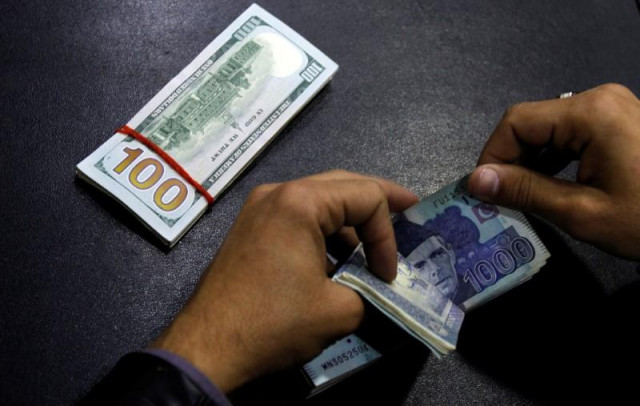Bank profits to grow steadily in Pakistan: Moody’s
Profit growth will come from increasing lending to government at high rates

PHOTO: REUTERS
The growth in bank profits will come from their increasing lending to the government at the prevailing high interest rates as the benchmark interest rate stands at an eight-year high at 13.25% since July 2019.
Banks have been aggressively lending to the government in the shape of investment in the sovereign debt securities like three to 12-month market treasury bills (T-bills) and three to 10-year Pakistan Investment Bonds (PIBs) since July 2019.
“The sovereign credit profile has improved in recent months, benefiting the banks through their high exposure to government securities, which account for around 40% of their assets,” Moody’s Senior Vice President Constantinos Kypreos said in a statement on Thursday.
Moody’s upgrades Pakistan’s outlook to ‘stable’ from ‘negative'
Stable customer deposits and high liquidity also remain key strengths, providing banks with ample low-cost funding. Capital levels will remain broadly stable, but Moody’s considers these modest relative to the peers. “Profits will increase slightly but will remain below historical levels,” he said.
“Robust funding and liquidity and close links with the sovereign underpin its stable outlook for the Pakistan banking system over the next 12-18 months,” he said.
Topline Research banking analyst Fawad Basir, however, said it may be a difficult job for the banks to attract fresh deposits from customers under the prevailing tough economic environment in the country. “It is easier to grow deposits at a time of high economic growth,” he said.
Agreeing with Moody’s stable outlook for banks, he said the domestic market was debating whether the State Bank of Pakistan (SBP) would make first cut in the benchmark interest rate in May or later.
“Many of the research houses were of the view the central bank would make the first cut in March. They, however, now think the first rate reduction will occur in May given the inflation reading that came much higher than market expectation in January,” he said.
The high interest rate will stand positive for banks. The government has been aggressively borrowing from commercial banks since July 2019 when the International Monetary Fund (IMF) asked the government to stop borrowing from the central bank as it causes inflation.
Pakistan entered the latest IMF loan programme of $6 billion in May 2019. The international financial institution is conducting a second economic review of Pakistan these days. Earlier, it released two loan tranches totalling around $1.5 billion.
Moody’s keeps Pakistan's banking system outlook stable
“Operating conditions for Pakistan banks, although gradually improving, remain difficult amid tight monetary conditions - with the policy rate at 13.25% - and large government borrowing needs crowding out funding for the private sector,” Kypreos added.
Moody’s expects Pakistan government will remain willing to support at least the systematically important banks in case of need, but its ability to do so is limited by the fiscal challenges reflected by its B3 rating.
In terms of the operating environment, the economic activity in Pakistan will also be supported by ongoing infrastructure projects and improvements in power generation and domestic security.
In addition, terms of trade gains and the rupee depreciation will likely raise private investment from low levels, Moody’s said.
Published in The Express Tribune, February 7th, 2020.
Like Business on Facebook, follow @TribuneBiz on Twitter to stay informed and join in the conversation.



















COMMENTS
Comments are moderated and generally will be posted if they are on-topic and not abusive.
For more information, please see our Comments FAQ